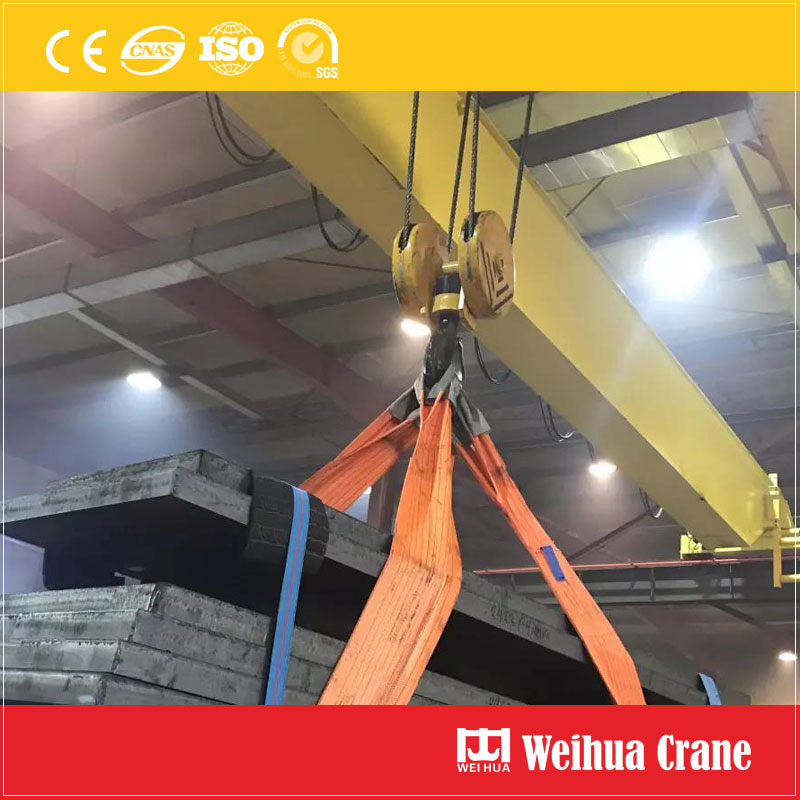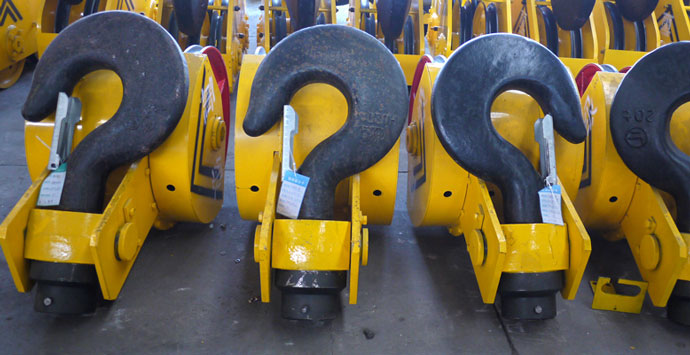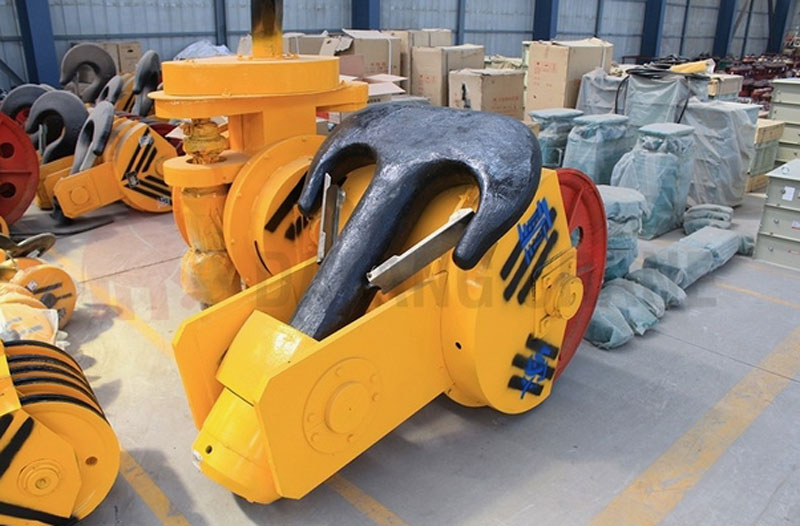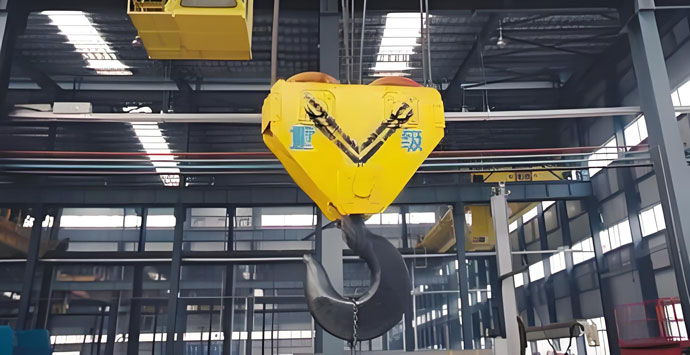Gantry crane Anda adalah pekerja keras dalam operasi Anda, memindahkan beban besar dan kuat dengan kekuatan dan presisi. Namun menggantung di ujung rantai atau tali kawat vital tersebut merupakan komponen yang sering dianggap remeh hingga gagal: kaitnya. Ketika waktu penggantian tiba, ini bukan sekedar pekerjaan pertukaran – ini adalah prosedur keselamatan dan operasional penting yang menuntut keahlian dan ketekunan.

1. Risiko Kegagalan Bencana: Kait yang gagal saat dimuat bukanlah suatu ketidaknyamanan; itu adalah bencana. Beban yang terjatuh menyebabkan kerusakan parah, cedera, atau bahkan korban jiwa. Kelelahan, celah, memakai, kelebihan beban, atau deformasi adalah pembunuh diam-diam.
2. Kepatuhan Pengaturan: Osha (Administrasi Keselamatan dan Kesehatan Kerja), Standar ANSI/ASME B30, dan badan pengawas lainnya mewajibkan pemeriksaan rutin dan penggantian kait derek yang menunjukkan tanda-tanda kerusakan. Mengabaikan hal ini akan mengundang hukuman dan tanggung jawab.
3. Waktu Henti Operasional: Kegagalan kait memaksa segera, penutupan yang tidak direncanakan. Penggantian proaktif selama pemeliharaan terjadwal meminimalkan gangguan operasional yang mahal.
4. Keausan Dini pada Komponen Lain: Kait yang rusak atau tidak sejajar memberikan tekanan yang tidak normal pada tali kawat/rantai beban, berkas gandum, dan struktur derek itu sendiri, mengarah pada perbaikan yang lebih ekstensif.

Jangan menunggu bencana. Jadwalkan penggantian segera jika pemeriksaan menunjukkan:
1. Celah: Retak apa pun yang terlihat, terutama di tenggorokan kait, betis, atau area kait, adalah kecaman instan.
2. Pembukaan Tenggorokan yang Berlebihan: Ukur tenggorokan kait. Jika melebihi kenaikan yang diijinkan pabrikan (biasanya sekitar 15% asli), menggantinya.
3. Memutar atau Membungkuk: Pengaitnya harus lurus. Setiap tikungan atau tikungan yang terlihat akan membahayakan integritasnya.
4. Keausan yang Signifikan: Alur dalam atau keausan melebihi 10% dari diameter bagian asli di area penahan beban kritis.
5. Kerusakan Kait/Tidak Dapat Dioperasikan: Kait pengaman yang rusak atau tidak berfungsi tidak memenuhi tujuan utamanya – mencegah pelepasan beban secara tidak sengaja.
6. Lubang Korosi: Lubang yang parah, terutama di zona stres tinggi, melemahkan kait secara struktural.
7. Sejarah Kelebihan Beban: Jika kait diketahui terkena beban yang melebihi kapasitas pengenalnya, penggantian adalah bijaksana.

Mengganti a kait derek gantry BUKAN merupakan tugas DIY untuk personel yang tidak terlatih. Hal ini memerlukan pengetahuan khusus, peralatan, dan kepatuhan yang ketat terhadap protokol keselamatan:
1. Lockout/Tagout (Jantung): Ini adalah langkah pertama yang mutlak. Isolasikan derek sepenuhnya dari semua sumber energi (listrik, hidrolik, pneumatik) dan mengamankannya dari pergerakan yang tidak disengaja. Verifikasi status energi nol.
2. Penilaian Menyeluruh:
3. Penghapusan Terkendali:
Turunkan pengait yang ada dengan aman ke permukaan tanah atau platform kerja yang stabil.
Gunakan alat pengangkat yang sesuai (seperti derek servis atau kerekan rantai yang lebih kecil) untuk menopang pengait selama pemutusan sambungan.
Lepaskan kait lama dari tali kawat dengan hati-hati, rantai, atau tautan perantara. Dokumentasikan tanda-tanda keausan yang tidak normal pada perangkat keras penghubung.
4. Persiapan & Instalasi:
Bersihkan titik sambungan pada tali kawat atau rantai.
Siapkan pengait baru sesuai dengan instruksi pabriknya (MISALNYA., memastikan kait pengaman berfungsi dengan benar).
Pasang kait baru dengan aman menggunakan pin yang benar, belenggu, atau tautan. Torsi semua pengencang sesuai spesifikasi pabrikan. Gunakan senyawa pengunci benang yang sesuai jika ditentukan.
Pastikan pengait diorientasikan dengan benar agar dapat berputar bebas (jika berlaku) dan pergerakan tanpa hambatan.
5. Inspeksi Ketat & Pengujian:
6. Dokumentasi: Catat semua langkah yang diambil, bagian diganti (sertakan nomor seri jika ada), hasil tes, dan tanggal penggantian. Perbarui catatan pemeriksaan dan pemeliharaan derek.

Mengingat implikasi keselamatan yang penting dan kompleksitas teknis, penggantian kait harus dipercayakan kepada:
1. Inspektur Derek Bersertifikat: Untuk pra menyeluruh- dan inspeksi pasca penggantian.
2. Teknisi Crane Berkualitas: Dengan pelatihan khusus dan pengalaman dalam prosedur pembongkaran/perakitan dan pengujian beban.
3. Spesialis Tali-temali: Untuk memastikan metode koneksi yang tepat dan pemilihan perangkat keras.
Penggantian kait gantry crane yang proaktif tidak memerlukan biaya; ini adalah investasi penting dalam keselamatan, kepatuhan terhadap peraturan, dan kelangsungan operasional. Mengabaikan tanda-tandanya atau mencoba jalan pintas adalah perjudian dengan konsekuensi yang sangat buruk. Dengan mengetahui kapan penggantian diperlukan dan melaksanakan prosedur secara cermat dengan tenaga profesional yang berkualifikasi, kamu melindungi rakyatmu, aset Anda, dan kelancaran aliran operasi penting Anda.
Kami menghargai tanggapan Anda! Harap lengkapi formulir di bawah ini sehingga kami dapat menyesuaikan layanan kami dengan kebutuhan spesifik Anda.


Klik tombol untuk mendapatkan informasi produk dan kutipan di whatsapp.
Dapatkan penawaran
Komentar terbaru